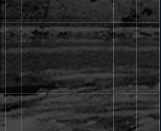|
We
were very young when we started. My brother José Miguel was
13 when we came from Antofagasta to Santiago. I was 17. We were
the first to leave home. Four of eleven children were in the group.
It was difficult for our mother to accept, but we knew what we wanted
to do with our lives. By September of 1973 we were in high gear.
Everyone was predicting a bright future.
The coup was very traumatic. All the people in the DICAP catalog
were persecuted by the regime, including us, although we were not
very political nor were we connected to a political party. We were
very young and were not very clear about anything, but we felt Allende’s
government was doing good things for our people. We were automatically
marginalized from the media and were called to appear at a regiment,
as were all the singing groups. Andean instruments -- charangos
[small stringed instrument made from an armadillo shell], quenas
[reed flutes] -- were banned. So was wearing a poncho. As a result,
we were banned from performing in this country. So, half of the
Illapu returned to Antofagasta, to the womb, so to speak. Three
of us stayed in Santiago, where we sang in cafés, little
things to keep active.
We began to function again as a group at the end of 1974, when those
who returned to Antofagasta reorganized and started performing in
a peña called El Tambo Atacmeño at the University
of the North. We joined them there, then moved back to Santiago
and made a record shortly after the New Year of 1975. Shortly after
the Andean instruments were banned, a group called the Barroco Andino
appeared. They played baroque music with those Andean instruments,
and the charango, the quena, the zampoña
[pan pipes], were once again legitimized. So when Illapu reappeared,
we reclaimed our music.
In 1976 we made Despedida del Pueblo. On that album, we recorded
a song that we had heard in Argentina when we went there to learn
about the country and its music: a candombé with an
Argentine zamba rhythm. We added charangos and quenas
and mixed it differently. It told of a black man, José, who
had a very hopeful message. Nothing very deep politically, but something
could be interpreted from the lyric, from metaphors that conveyed
much more than what the song itself said. There are phrases that
people made their own.
El Candombé para José became a kind of hymn
of political prisoners. They would sing it when a new prisoner was
brought in or when a prisoner was released.
|
|

